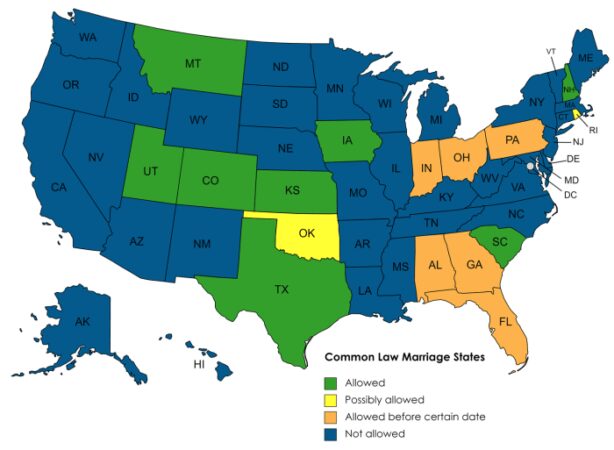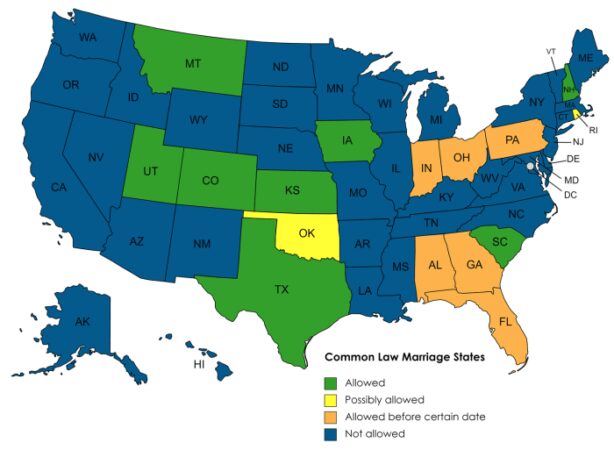
What are the new laws for 2024 in California? The Golden State is known for its progressive policies, and 2024 is no exception. This year, California is implementing a wide range of new laws across various sectors, from business and labor to housing and healthcare. These changes aim to address pressing societal issues, enhance protections for workers and residents, and promote sustainability.
From significant shifts in labor laws to innovative environmental regulations, California is setting the stage for a year of transformation. This guide explores the key new laws that will shape the state’s landscape in 2024, offering insights into their potential impact on businesses, individuals, and communities.
Healthcare and Insurance

California continues to prioritize healthcare access and affordability, enacting several new laws in 2024 that aim to improve the lives of its residents. These laws address critical areas like health coverage, prescription drug pricing, and medical malpractice, with the goal of ensuring equitable and accessible healthcare for all.
Changes to Health Coverage
These new laws aim to expand health coverage and make it more affordable for Californians.
- Expansion of Medi-Cal Eligibility: The state has expanded Medi-Cal eligibility to include more individuals and families, particularly those with low incomes. This means that more Californians can access essential healthcare services, including preventive care, hospitalization, and prescription drugs.
- Increased Subsidies for Covered California: The state has increased subsidies for individuals and families purchasing health insurance through Covered California, the state’s health insurance marketplace. This makes health insurance more affordable for many Californians, particularly those with lower incomes.
- Short-Term Health Plans: New regulations have been implemented to restrict the use of short-term health plans, which often have limited coverage and can leave individuals with high medical bills. This move aims to ensure that individuals have access to comprehensive and affordable health insurance plans.
Prescription Drug Pricing
California has taken significant steps to address the high cost of prescription drugs, particularly for those with chronic conditions.
- Price Negotiation for State-Funded Drugs: The state has granted authority to the Department of Health Care Services to negotiate lower prices for prescription drugs used by Medi-Cal recipients. This could lead to significant savings for the state and lower costs for patients.
- Transparency in Drug Pricing: New laws require pharmaceutical companies to disclose the costs associated with developing and manufacturing their drugs, increasing transparency and potentially leading to lower prices.
Medical Malpractice
California has made changes to its medical malpractice laws to balance the rights of patients and healthcare providers.
- Caps on Non-Economic Damages: The state has placed limits on non-economic damages (such as pain and suffering) that can be awarded in medical malpractice lawsuits. This is intended to reduce the cost of medical malpractice insurance for healthcare providers, potentially lowering healthcare costs overall.
- Increased Emphasis on Alternative Dispute Resolution: The state is encouraging the use of alternative dispute resolution methods, such as mediation and arbitration, to resolve medical malpractice claims outside of court. This can help to reduce the time and expense associated with litigation.
Impact on Individuals and Families
These new healthcare and insurance laws are expected to have a significant impact on individuals and families in California.
- Increased Access to Healthcare: The expansion of Medi-Cal eligibility and increased subsidies for Covered California will provide greater access to healthcare for low-income individuals and families. This could lead to improved health outcomes and reduced financial burdens.
- Lower Prescription Drug Costs: The state’s efforts to negotiate lower prices for prescription drugs could lead to significant savings for individuals and families, particularly those with chronic conditions.
- Protection for Individuals with Pre-Existing Conditions: The new laws strengthen protections for individuals with pre-existing conditions, ensuring that they can access affordable health insurance coverage.
Costs and Benefits
The new healthcare and insurance regulations in California are expected to have both costs and benefits.
- Costs: The state will incur significant costs associated with expanding Medi-Cal eligibility and increasing subsidies for Covered California. Additionally, the caps on non-economic damages in medical malpractice lawsuits could potentially limit compensation for patients who have suffered serious injuries.
- Benefits: The benefits of these new laws include improved health outcomes, increased access to healthcare, and reduced financial burdens for individuals and families. The state’s efforts to lower prescription drug costs could also lead to significant savings for both the state and individuals.
Key Changes to Healthcare and Insurance Laws
| Change | Objective | Anticipated Outcome |
|---|---|---|
| Expansion of Medi-Cal Eligibility | Increase access to healthcare for low-income individuals and families | Improved health outcomes and reduced financial burdens for eligible individuals and families |
| Increased Subsidies for Covered California | Make health insurance more affordable for individuals and families | Increased enrollment in Covered California and greater access to affordable health insurance |
| Restrictions on Short-Term Health Plans | Ensure individuals have access to comprehensive and affordable health insurance | Reduced use of short-term health plans and increased enrollment in comprehensive health insurance plans |
| Price Negotiation for State-Funded Drugs | Lower prescription drug costs for Medi-Cal recipients | Significant savings for the state and lower costs for Medi-Cal recipients |
| Transparency in Drug Pricing | Increase transparency and potentially lead to lower drug prices | Greater understanding of drug pricing and potential for lower costs for individuals and families |
| Caps on Non-Economic Damages in Medical Malpractice Lawsuits | Reduce the cost of medical malpractice insurance for healthcare providers | Lower healthcare costs overall and potentially reduced premiums for medical malpractice insurance |
| Increased Emphasis on Alternative Dispute Resolution | Reduce the time and expense associated with medical malpractice litigation | Faster and more efficient resolution of medical malpractice claims and potentially lower costs for healthcare providers |
Education and Childcare

California’s 2024 legislative session has brought forth several new laws aimed at improving education and childcare in the state. These laws address a range of issues, from increasing school funding to expanding early childhood development programs. The goal is to create a more equitable and accessible education system for all Californians.
Funding and Resources
These new laws aim to provide more resources to schools and childcare centers, ultimately benefiting students and families.
- Increased Funding for Schools: The state budget includes a significant increase in funding for public schools, aiming to reduce class sizes, hire more teachers, and provide more support services for students. This increased funding is expected to benefit students by providing them with more individualized attention and access to a wider range of resources.
- Expanded Early Childhood Development Programs: New laws have expanded access to state-funded preschool programs for low-income families. This expansion is designed to ensure that all children have access to quality early childhood education, regardless of their family’s financial situation.
- Teacher Training and Support: The new laws also include provisions for increased teacher training and support. This includes funding for professional development programs and initiatives to attract and retain qualified teachers in high-need areas. This focus on teacher training and support is expected to improve the quality of education provided to students.
Student Support Services
The new laws prioritize providing students with the support they need to succeed.
- Mental Health Support in Schools: The legislation includes funding for additional mental health professionals in schools. This aims to provide students with access to mental health services, addressing the growing need for support in this area.
- Increased Access to After-School Programs: New laws have expanded funding for after-school programs, providing students with more opportunities for enrichment and academic support outside of the regular school day.
Childcare Accessibility
The new laws aim to improve access to affordable and quality childcare for families.
- Expansion of Childcare Subsidies: The legislation expands eligibility for childcare subsidies, making them accessible to more families. This will help alleviate the financial burden of childcare for many families, allowing them to access quality care for their children.
- Increased Funding for Childcare Providers: The new laws also include funding to increase the wages of childcare providers. This is aimed at attracting and retaining qualified caregivers, ultimately improving the quality of care provided to children.
Public Safety and Law Enforcement
California’s 2024 legislative session saw a number of new laws aimed at reforming the criminal justice system, enhancing gun control measures, and increasing police accountability. These measures reflect the state’s ongoing efforts to address concerns about public safety, crime rates, and the relationship between law enforcement and communities.
Criminal Justice Reform
The new laws aim to reduce prison populations, promote rehabilitation, and ensure fairer treatment within the criminal justice system.
- Expansion of Early Release Programs: Some new laws expand early release programs for certain nonviolent offenders, allowing them to reintegrate into society sooner. This is expected to reduce prison overcrowding and potentially lower recidivism rates. For example, AB 126 aims to reduce the prison population by allowing early release for inmates who have completed certain rehabilitation programs.
- Increased Access to Mental Health Services: New laws aim to increase access to mental health services for individuals involved in the criminal justice system, recognizing the link between mental health and criminal behavior. This could involve expanding mental health treatment options within prisons and providing more resources for individuals with mental health conditions upon release. For instance, SB 103 directs the California Department of Corrections and Rehabilitation to develop a comprehensive plan to improve mental health care within prisons.
- Rehabilitation Programs for Youthful Offenders: New legislation focuses on providing rehabilitative programs for youthful offenders, aiming to reduce recidivism rates and promote their successful reintegration into society. This may involve expanding access to education, job training, and support services specifically designed for young people who have been involved in the criminal justice system. For example, AB 123 requires the development of a statewide program to provide job training and employment assistance to youth who have been incarcerated.
Gun Control
The new laws aim to enhance gun safety measures and reduce gun violence in the state.
- Assault Weapons Ban: Some new laws strengthen the state’s assault weapons ban by prohibiting the manufacture and sale of certain types of firearms, aiming to reduce the availability of weapons that are commonly used in mass shootings. For instance, AB 131 prohibits the manufacture and sale of certain types of semi-automatic rifles that meet specific criteria.
- Background Checks: New legislation expands background checks to include private gun sales, making it more difficult for individuals with criminal records or mental health issues to obtain firearms. This measure aims to prevent firearms from falling into the wrong hands. For example, AB 132 requires background checks for all private gun sales and transfers.
- Safe Storage Requirements: New laws require gun owners to store their firearms securely to prevent accidental shootings or theft. This could involve mandating the use of gun safes or requiring firearms to be locked when not in use. For instance, AB 133 requires gun owners to store their firearms in a locked container or with a trigger lock.
Police Accountability, What are the new laws for 2024 in california
The new laws aim to increase transparency, accountability, and oversight of law enforcement agencies.
- Body Camera Requirements: New laws expand the requirement for police officers to wear body cameras, increasing transparency and accountability. This allows for independent review of police actions and can help resolve disputes about use of force. For example, AB 134 requires all law enforcement officers to wear body cameras during interactions with the public.
- Use of Force Reporting: New legislation requires law enforcement agencies to collect and report data on use of force incidents, providing a more comprehensive picture of how force is used by police. This data can help identify trends and inform strategies to reduce unnecessary use of force. For example, AB 135 requires law enforcement agencies to submit annual reports on use of force incidents, including details about the circumstances surrounding each incident.
- Independent Investigations: New laws establish independent investigations of police misconduct, ensuring that investigations are conducted impartially and with greater public confidence. This can help address concerns about bias and protect the rights of individuals who have been subjected to police misconduct. For example, AB 136 establishes an independent unit within the California Department of Justice to investigate police misconduct cases.
Technology and Data Privacy
California continues to be at the forefront of data privacy regulations, with new laws for 2024 aimed at bolstering consumer protection and shaping the future of technology. These laws address crucial aspects of data collection, cybersecurity, and online advertising, with significant implications for individuals, businesses, and the technology sector.
Data Collection and Sharing
The new regulations emphasize transparency and control over personal data. Individuals will have enhanced rights to access, delete, and correct their data, while businesses face stricter requirements for obtaining consent and disclosing how data is used. These provisions aim to empower individuals and hold companies accountable for responsible data practices.
- The California Privacy Rights Act (CPRA) expands upon the California Consumer Privacy Act (CCPA) by introducing new rights for consumers, including the right to opt out of the sale of their sensitive personal information. This includes data like social security numbers, financial information, and geolocation data.
- The CPRA also strengthens requirements for data minimization, requiring companies to collect only the data necessary for their stated purposes. This helps to reduce the amount of personal information collected and stored, minimizing potential risks to privacy.
- The law mandates that businesses provide clear and concise privacy notices that inform consumers about how their data is collected, used, shared, and protected. This transparency helps consumers make informed decisions about their data.
Cybersecurity
The new laws aim to enhance cybersecurity measures and protect consumers from data breaches. Businesses are required to implement robust security practices, including data encryption, access controls, and regular security audits. These measures are intended to safeguard sensitive information and minimize the impact of potential breaches.
- The CPRA strengthens cybersecurity requirements for businesses, including mandatory breach notification protocols. This means that businesses must notify individuals affected by a data breach within a specific timeframe, allowing them to take steps to mitigate potential harm.
- The law also encourages the adoption of advanced cybersecurity technologies, such as artificial intelligence (AI) and machine learning, to detect and prevent cyber threats. This helps to create a more secure digital environment for consumers and businesses.
Online Advertising
The new laws address concerns about targeted advertising and the potential for data misuse. They aim to provide consumers with more control over how their data is used for advertising purposes, while also promoting transparency in online advertising practices.
- The CPRA prohibits the use of sensitive personal information for targeted advertising without explicit consent. This includes data like race, religion, and political affiliations.
- Businesses are required to provide consumers with clear and concise information about how their data is used for advertising purposes. This includes disclosing the types of data collected, the purposes for which it is used, and the third parties with whom it is shared.
- The law also allows consumers to opt out of targeted advertising based on their online activity, providing them with greater control over their digital footprint.
Closing Summary

Navigating the complex world of new laws can be challenging, but understanding their implications is crucial. Whether you’re a business owner, an employee, or simply a resident of California, staying informed about these changes is essential. This guide has provided a comprehensive overview of the key new laws in California for 2024, highlighting their potential impact and offering insights into their intended outcomes. As the year unfolds, it’s important to stay updated on any further developments and their potential consequences.
Essential Questionnaire: What Are The New Laws For 2024 In California
How can I stay updated on new laws in California?
The California Legislative Information website (https://leginfo.legislature.ca.gov/) provides access to the latest legislation, including newly enacted laws. You can also subscribe to email alerts or follow relevant government agencies on social media for updates.
Are there any resources available to help businesses comply with new laws?
The California Chamber of Commerce offers resources and guidance for businesses on compliance with new laws. You can also consult with legal professionals specializing in California business law for specific advice.
What are the potential consequences of not complying with new laws?
Failing to comply with new laws can result in fines, penalties, or even legal action. It’s crucial to understand and adhere to the requirements Artikeld in new legislation.

